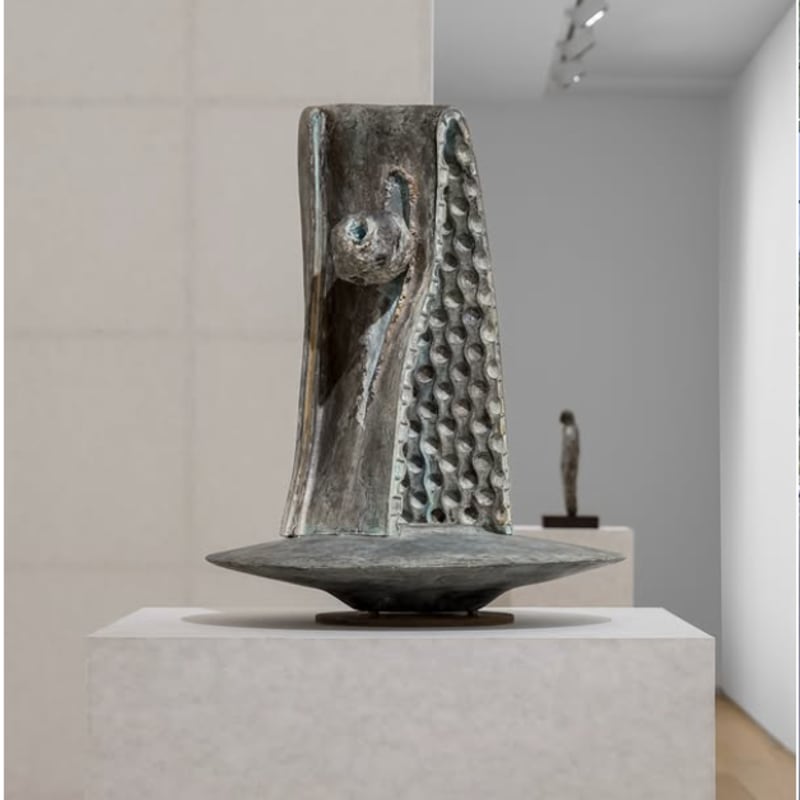Joan Snyder’s Abstract Landscapes Dismantle Expectations A review of 'Body & Soul'
By Ellen Mara de Wachter
The earliest work in this six-decade survey of Joan Snyder’s art, Grandma Cohen’s Funeral Painting (1964), is an ambiguous picture. A body is laid out for visitation, limbs outlined in black and ochre, interlaced with a pillowy white shroud. Or so it seems until the scale shifts and the agitated stripes in the chest area transform into a gathering of mourners on snowy ground. Another option: this is a figure and a landscape, but also a composition of abstract marks.
In the late 1960s, Snyder initiated her ‘Stroke’ series, celebrating the vital gesture of painting. Initially, she located her brushstrokes within landscapes. In Stroke Landscape (1968), the canvas is divided horizontally: the top half constitutes a solid pink sky; the bottom half is strewn with browns, greens and ochres against an ecru ground. Snyder’s dashes and chubby lines seem to result from her brush lovingly caressing the canvas, which lends the works an erotic charge associated with creation and life energy. They are also meant to stimulate new ways of seeing. In a 1969 text, reprinted in the gallery pamphlet, she declares: ‘ISOLATE THE STROKE AND SSEEEEE COLOR …’
In Flesh Flock Painting with Strokes and Stripes (1969), such marks populate the bottom half of a pinkish-beige hourglass figure. Across its top half, endowed with breast-like curves, scattered forms in greenish tones evoke mouths or yonis. Erupting from the centre of the image, a ring of flock – fibrous in texture, sprayed with pink – lends the picture an unruly sensuality. Rather than strokes as individual parts, here entire sections of the composition seem to both stand on their own and remain inseparable from the whole.
[...]
In a room of their own, eight new works (all 2024) return to landscape. Several feature large ‘ponds’ made by pouring paint onto horizontal canvases. The lustrous silver pool on the lefthand panel of the diptych Come to Pearl Pond is contained by ridges of white, pink and brown impasto, and scattered with dried rosebuds, poppy seedheads and straw. Like a mirror, it is both attractive and confronting. The righthand panel itemises some of Snyder’s strokes: juicy, dry, crumbly; cooling, grounding, dramatic; wide, short, drippy. Together, they are a reminder of the inextricable relationship between landscape, abstraction and figuration that the artist has explored throughout her career. Whatever scale or surface she chooses, Snyder translates experiences into art and back again, dismantling expectations of what a painting might be and reassembling things in vivid new ways.


















































































































































































